
During our tour of Mongolia, we spent half a day visiting the ancient city of Karakoram. The highlight of our trip was undoubtedly the Erdene Zuu Monastery, the oldest Buddhist temple in Mongolia. Though it has been badly damaged throughout history, a few temples within the monastery complex remain intact.
We can't wait to share what we have seen and the incredible photos we took with you.
This article will delve into our visit to the Erdene Zuu Monastery, while separate articles will shed light on the Kharakhorum Museum and the King’s Monument.
Arrived at Erdene Zuu Monastery
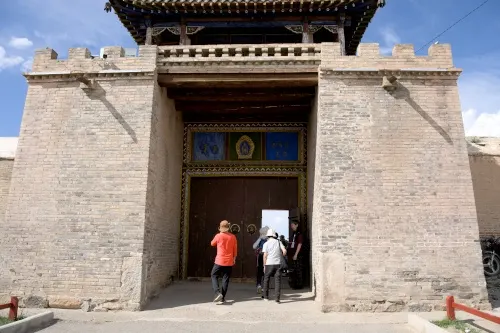
The Monastery compound is pretty huge. The surrounding wall has 108 stupas on top, spaced out every 15 meters. The walled area is almost half a kilometer on each side, so it's a pretty impressive structure.
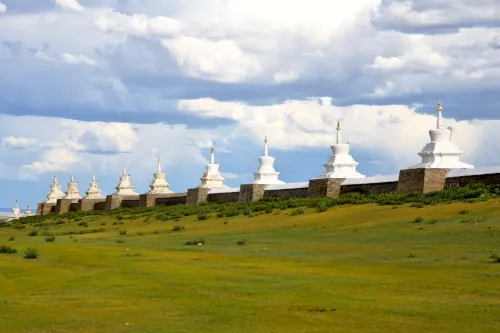
We saw ruins and an empty land once we passed through the main gate. The three surviving main temples were prominently visible from afar.
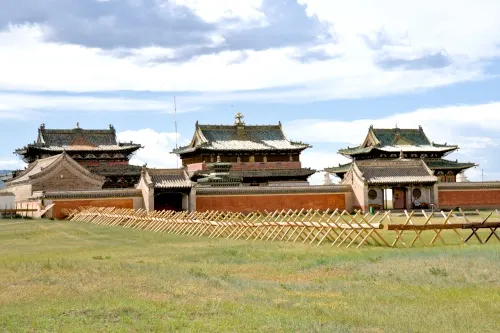
We first visited the Dalai Lama Temple (Dalai Lama süm), constructed in 1675, to honor the visit of Altan, the son of Abtai Khaan, to the Dalai Lama in Tibet. This temple is one of the few that survived from that time.
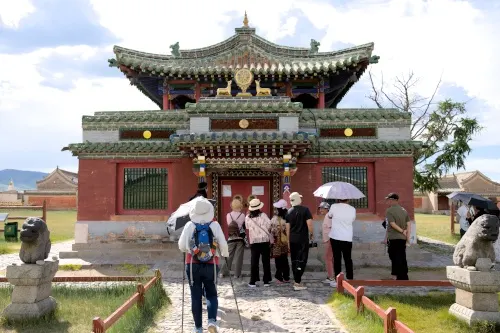
Before we went into the main temples, we paid a camera fee of 20,000 Tugrik to be able to take photographs inside the temples.
The main attraction we visited
The three main temples are dedicated to the three stages of Buddha’s life - childhood, adulthood, and old age.
They are called the Left Temple, the Main Temple, and the Right Temple. Our guide told us that during the peak era of the Monastery in 1872, approximately 2000 monks lived in the temple. There were around 60 to 100 temples within its walls.
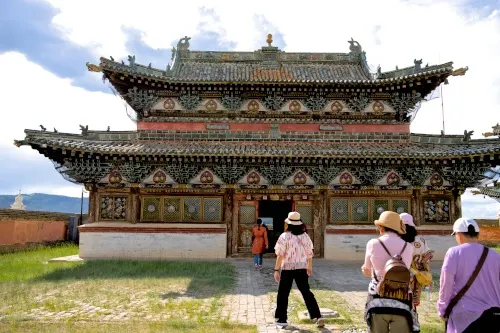
The three main temples
Right Temple: The Buddha statue in the Right Temple depicts Buddha at 80. The statues on both sides of the present Buddha are the past and future Buddhas.

Main Temple: In the Main Temple, there is a statue of Buddha, who was 35 years old, just after he attained enlightenment.
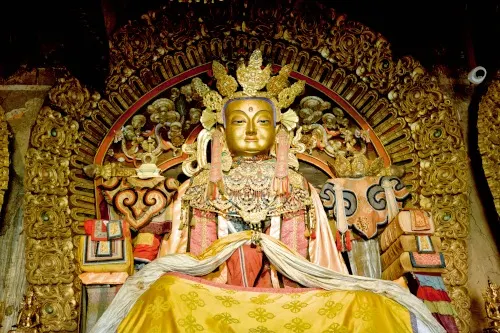
On the right side is a god who protects the monastery. The first floor has about 1000 sculptures, but we were not allowed to visit.

Left Temple: The middle statue in the Left Temple represents the present Buddha at 14 years old. We also walked around the narrow passage between the two surrounding walls in a clockwise direction, which is said to bring good fortune.
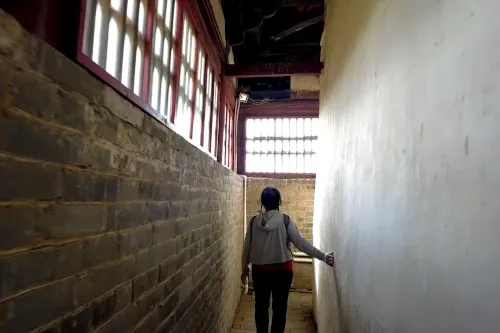
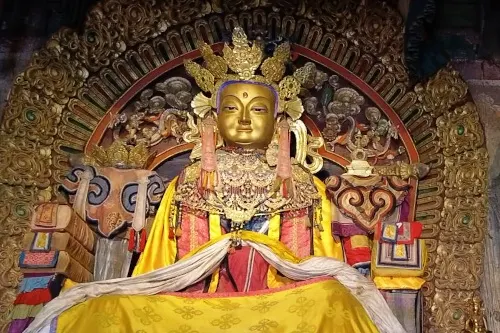
Others attractions
Golden Prayer Stupa: This large golden stupa, built in 1799, is a significant part of the monastery complex. It was constructed to honor the 25th birthday anniversary of the fourth Jebzundamba khutugt (the highest rank of lama). The stupa, approximately 8 meters high, is surrounded by eight small stupas and was not completely destroyed during the communist purges in the 1930s.
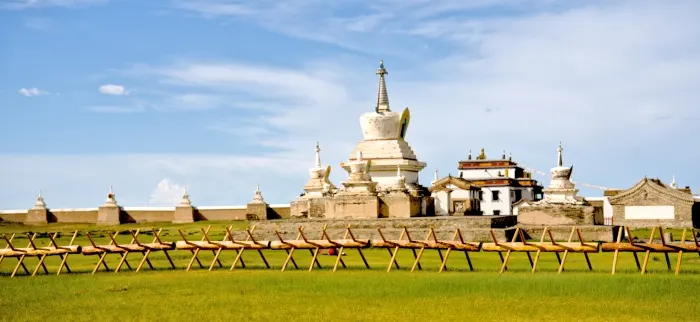
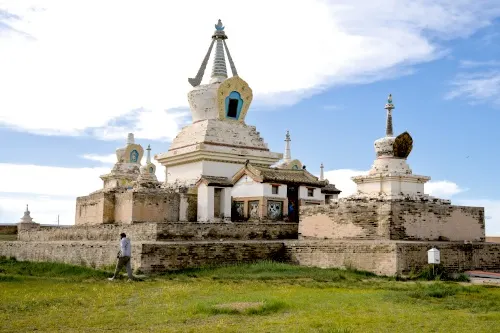
Others: We also visited the Temple of Aavalokiteshvara and Lavrin Temple. The monastery preserves and displays ancient artifacts, such as wall paintings, thangkas, and masks from the 18th century.
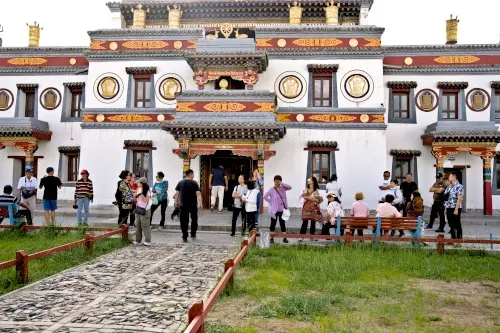
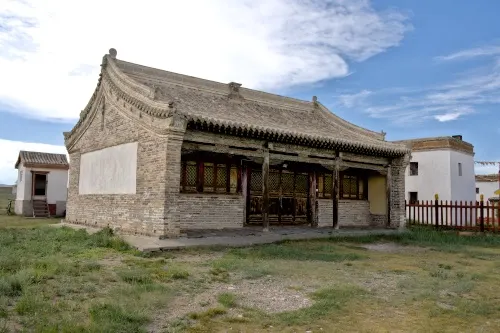
Stone Turtle: There is a giant stone turtle with a vivid body, muscular legs, long claws, a large mouth, and flame-like patterns not far away from the temple. These stone turtles were placed around ancient Kharkhorin to protect the city from floods and are considered symbols of longevity and eternity.
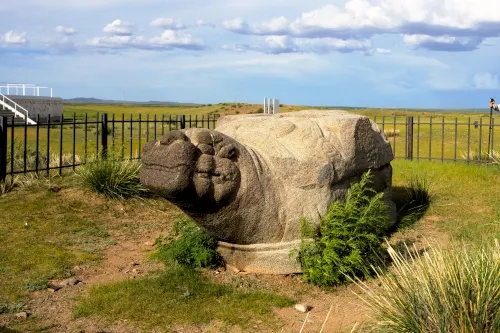
🎞️ Watch our video shot during the festival
Please watch the video we made for our trip on YouTube. As below:
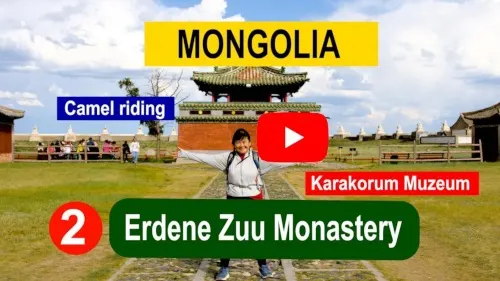
That's the summary of our visit to the monastery. Check out our other articles on our trip to Mongolia in this series.
About Erdene Zuu Monastery
Erdene Zuu is the oldest surviving Buddhist monastery in Mongolia.
It is considered the first Buddhist monastery in Mongolia. It was established in 1586 by Avtai Sain Khan (Abtai Sain Khan), a descendant of Genghis Khan, on the ruins of the ancient Kharkhorin, the capital of the Mongol Empire. In 1587, Abtai Sain Khan journeyed to Guihua (present-day Hohhot) to visit the 3rd Dalai Lama. After returning, he prohibited shamanism and announced Tibetan Buddhism as the official religion of the Khalkha Mongols. "Erdene Zuu" means "100 Treasures," referring to the original temples and stupas that form the monastery's exterior walls.
The monastery has a dramatic history, having been damaged and rebuilt multiple times due to various conflicts and political shifts. It was damaged during the conflict between the Dzungars and Khalkha Mongols in 1688 and restored in the 18th century. In 1939, the communist regime ordered the destruction of the monastery, resulting in the loss of nearly all its structures and the slaughter of thousands of monks. Only the seventeen temples were spared; they are now visitors' main temples and attractions. After the fall of communism in Mongolia in 1990, the monastery was returned to the lamas and became an active Buddhist monastery once again while remaining a museum for tourists.

Our tour is organized by Go Holiday 360 Sdn Bhd. You can contact them by visiting their website.
